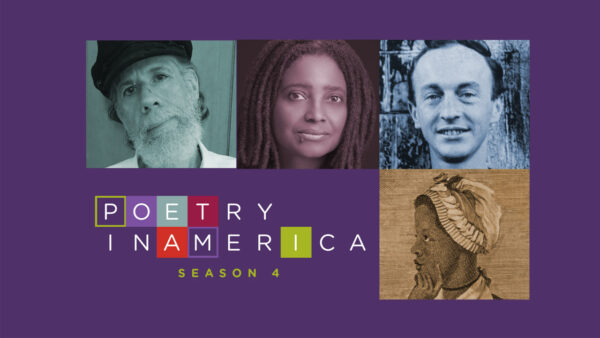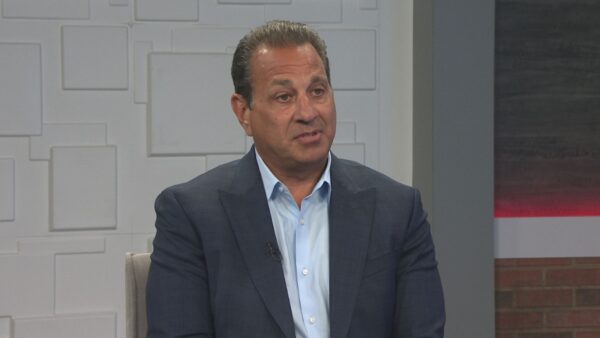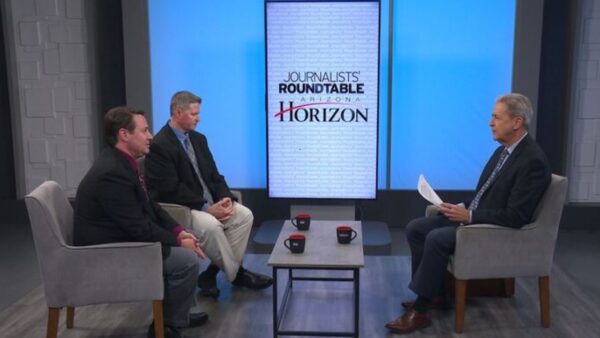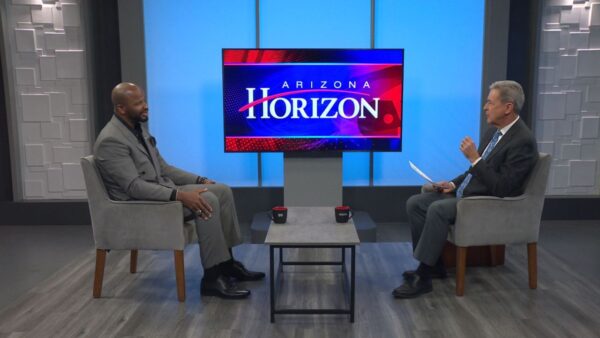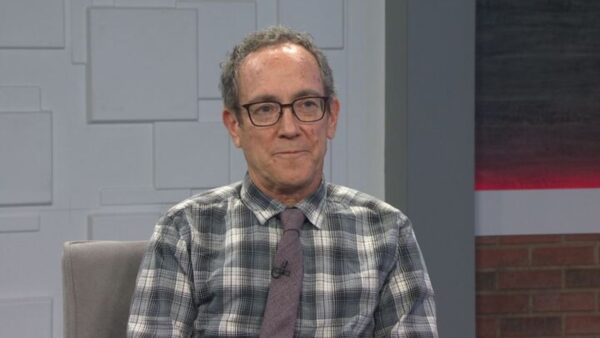The U.S. Supreme Court will conduct oral arguments December 8 in another case involving the Arizona Independent Redistricting Commission. A group of republican activists claims that legislative districts were drawn in a way to benefit democrats. Evan Wyloge, a senior reporter at the Arizona Center for Investigative Reporting, will attend the session and tell us what happened in a remote interview from Washington, D.C.
Ted Simons: Coming up next on Arizona Horizon, an update from Washington on today's oral arguments involving an Arizona redistricting case. Also tonight, an update on enrollment in the affordable care act, and we'll look back on the valley's contribution to early rock 'n' roll. Those stories next on Arizona Horizon.
Video: Arizona Horizon is made possible by contributions from the friends of Eight, members of your Arizona PBS station. Thank you.
Ted Simons: Good evening and welcome to Arizona Horizon. I'm Ted Simons. The U.S. Supreme Court today heard oral arguments on an Arizona case involving the state's legislative districts. The case was brought by Republicans who feel the districts were unfairly drawn to favor Democrats. Evan Wyloge, senior reporter at the Arizona center for investigative reporting was at today's hearing. And Evan, thank you for joining us, and great to have you with us back there in Washington. Let's get a brief recap, if you will on what exactly the Justices were hearing today.
Evan Wyloge: This case, Harris versus the Arizona independent redistricting commission, began shortly after the redistricting commission finished redrawing the maps in 2011. And the case, basically, looks at population deviations among the legislative districts, and it's a fact that the democratic leaning districts are under populated and the Republican leaning districts are overpopulated. So, the Republicans in this case, the plaintiffs are a group of ten Republicans, they are arguing that this was intentional, and it was done in order to try to help boost Democrats in the state legislature. So, this case went to a panel of three Federal judges in 2013. They looked at the case, and they decided that the redistricting commission, the disparities that they drew, into the map, are ok. They said that because the redistricting commission was attempting to get preclearance from the U.S. Justice Department, which is, basically, a way that the Justice Department ensures that minorities are protected under the voting rights act, that because the commission was trying to get that preclearance, that these population deviations were ok. That Federal panel of Federal judges did say that it seemed that partisanship played some role in some of the drawing of the districts. But, that they didn't have enough evidence to order that the maps be redrawn. So, the Supreme Court today heard a review of that case, and they are looking at whether they should order the commission to go back and redraw the legislative maps.
Ted Simons: Talk to us about the atmosphere at today's hearing. What did you see there and what was the tone of the room and the tenor of the questions, the tenor of the responses?
Evan Wyloge: It was a jovial attitude. A lot of laughing. A lot of funny asides. The plaintiffs in this case really just hammered home on the kind of the pattern of overpopulation and underpopulation you observe in these districts, and they say that if you look at that original trial court, the ruling that came out of it, that because there was that partisan motivation, that violates the U.S. constitution's protection of one person, one vote, and they say that all of these districts should be equally populated without any population deviations. The Justices, there was a live, a lively hearing. They were a bit rambunctious. They spoke over each other at times, and you could see that some of them were clearly on the side of one or the other. Some of them, you know, maybe a bit more guarded with where they are at right now, if we wanted to inspect each Justice you know, you could see that Justice Elena Kagan and Justice Ruth Bader Ginsburg both seemed very supportive of the redistricting commission and the maps that they drew. You had quite a bit of scrutiny from Alito. Justice Alito on what the commission did, and he seemed to be very amicable towards the plaintiffs in the case. Breyer asked some interesting questions, as well. He wanted to know how the court could side with the plaintiffs and write this opinion. He talked about how that would be a thorny proposition. Essentially, if they were to do that, he pointed out, they would be defining what partisan gerrymandering looks like, and that's not an easy task. And if you take one case and you try to draw that out of it, you are going to be setting precedents for courts across the country to inspect other legislative districts in other states and apply the same logic that they may put into this opinion.
Ted Simons: So it sounds, from a distance, as if there was some skepticism amongst the Justices that the commission had somehow gone above and beyond and was partisan to the point of favoring Democrats over Republicans, especially, we mentioned the deviation, I think that the plaintiffs mentioned up to 8.8% population differences in districts, and yet, I think that the threshold is 10% so they did not cross that. It sounds as though some of the Justices were wondering what they were doing there.
Evan Wyloge: We heard what you just said, from a few people in the courtroom. The attorney representing the commission today, you know, at one point he said, what's the beef? We're inside of this historic 10 percentage-point safe harbor zone that has been respected by the courts for population deviation. And a few of the Justices seemed to question, you know, exactly why they were hearing the case, as well. They seemed a bit confused about that.
Ted Simons: So where do we go from here, Evan? The case is heard, do we have any idea when a decision will be rendered or an opinion released?
Evan Wyloge: We are looking at a decision to come out in late spring or early summer, maybe as late as June, and if that comes down and sides with the plaintiffs, ordering the commission to redraw the maps, we would not have enough time to see these maps redrawn for the 2016 election. Instead, they would be redrawn in advance of the 2018 election.
Ted Simons: All right. Very good. Everyone, good stuff and good to have you here. Thanks for joining us from Washington. We appreciate it.
Evan Wyloge: Thanks for having me.
Video: We want to hear from you. Submit your questions, comments, and concerns via email at Arizona Horizon, at ASU.edu.
Evan Wyloge: Senior Reporter at the Arizona Center for Investigative Reporting



